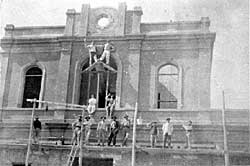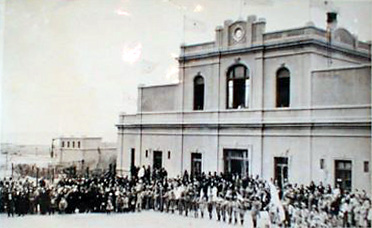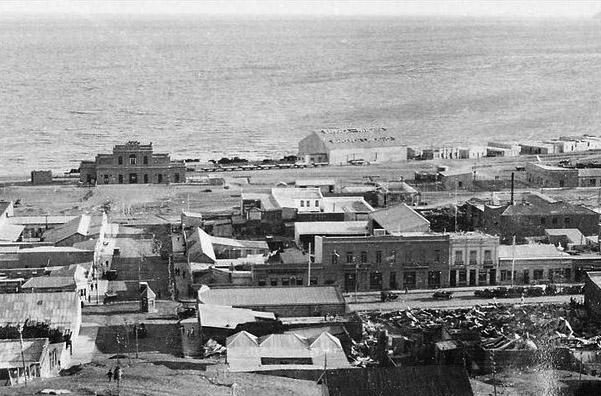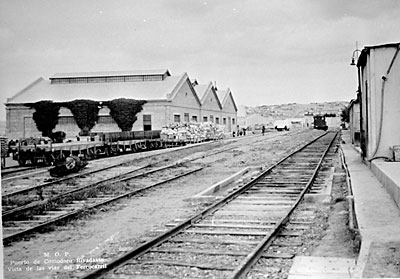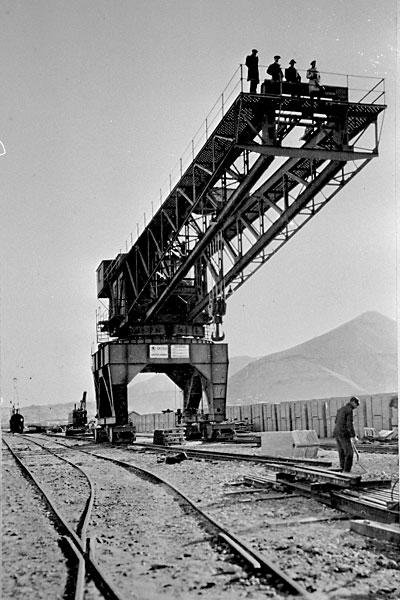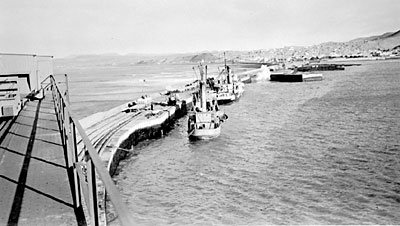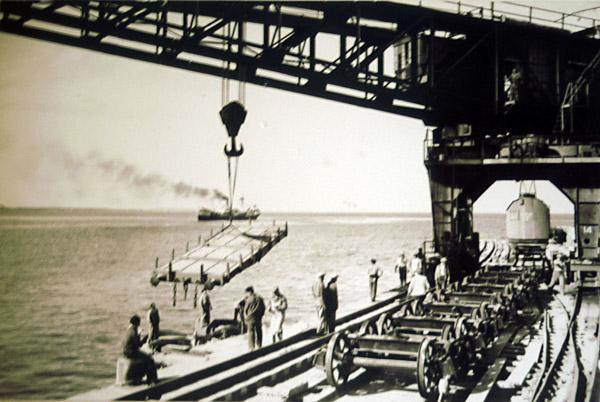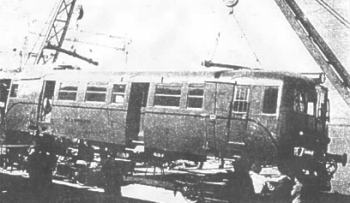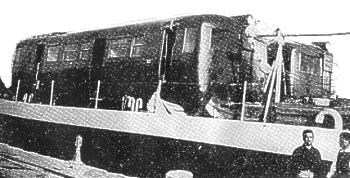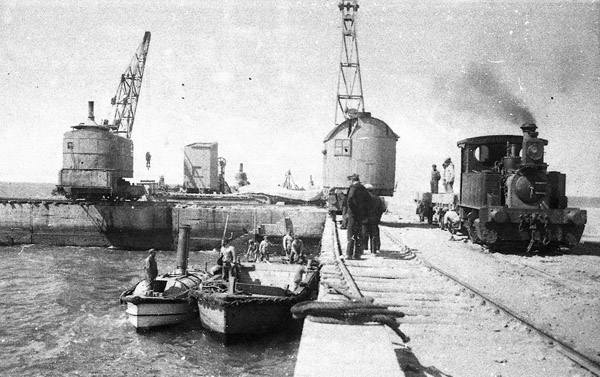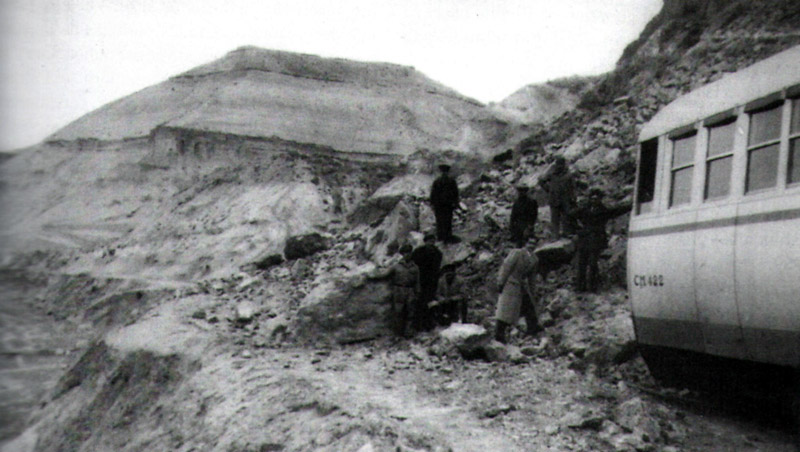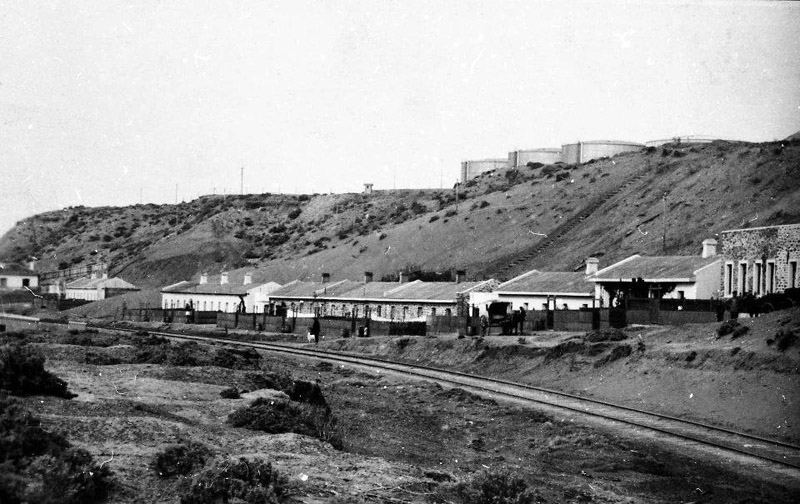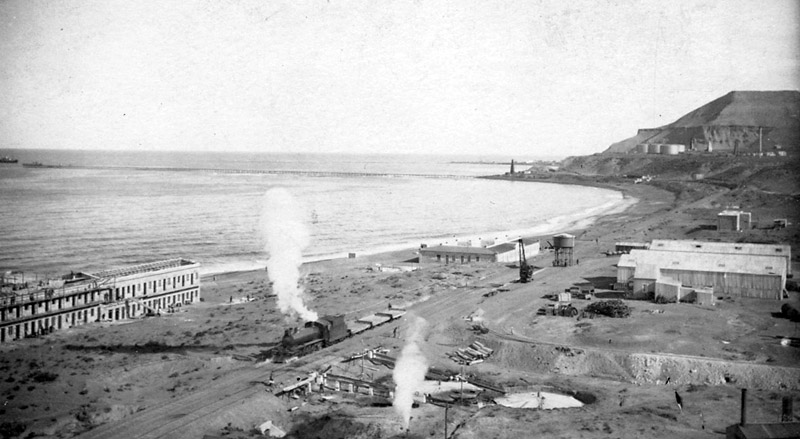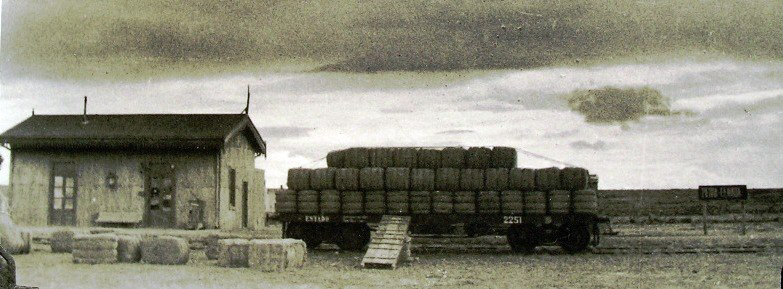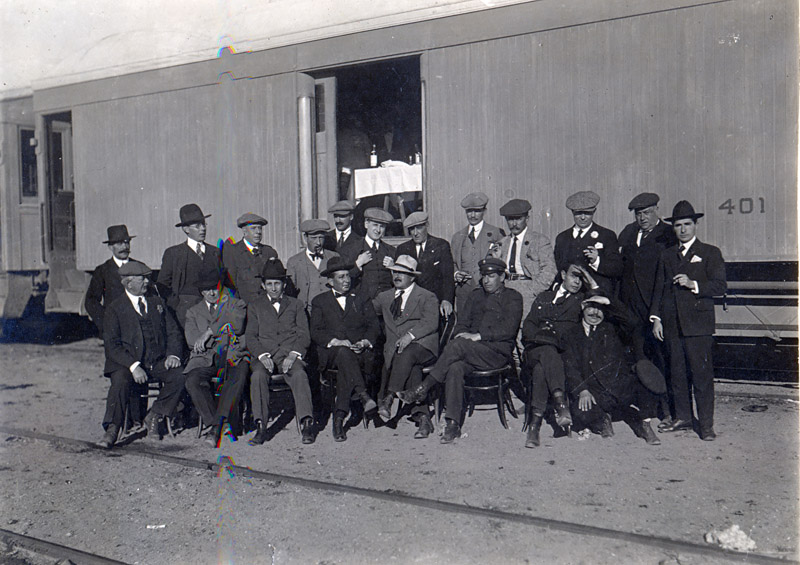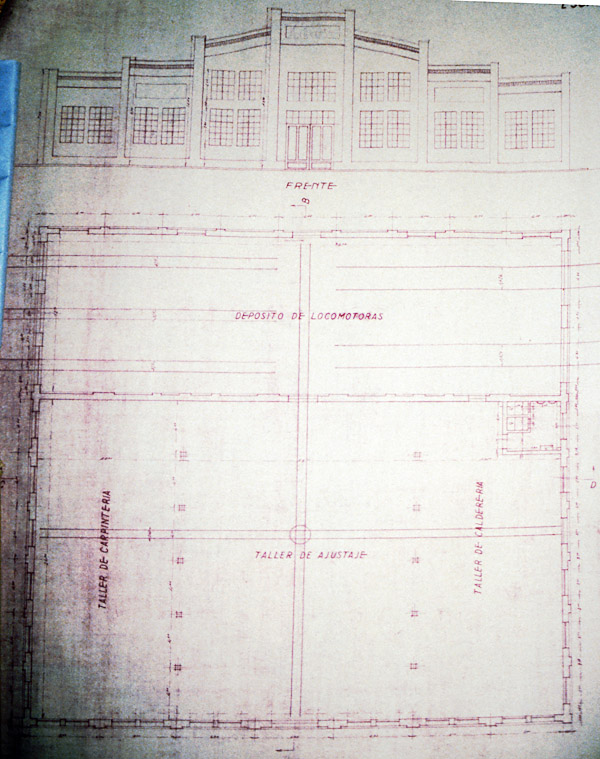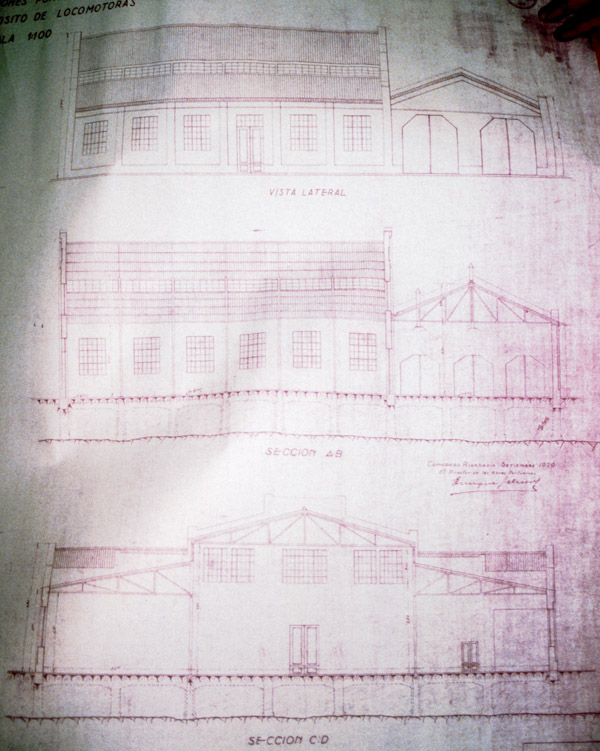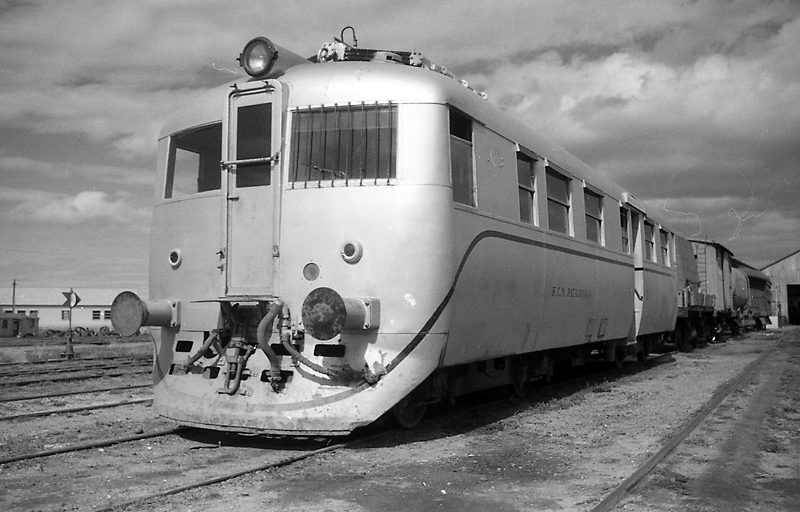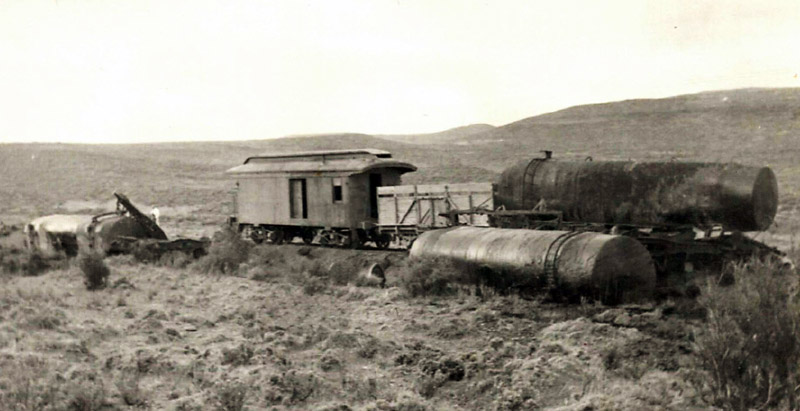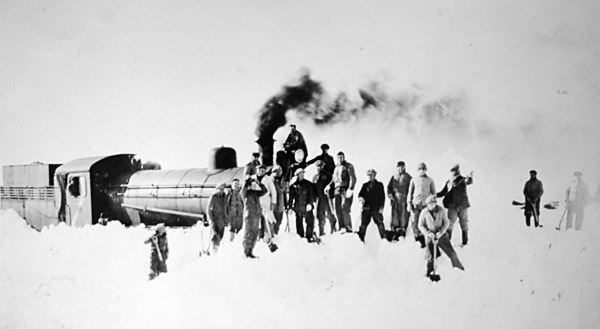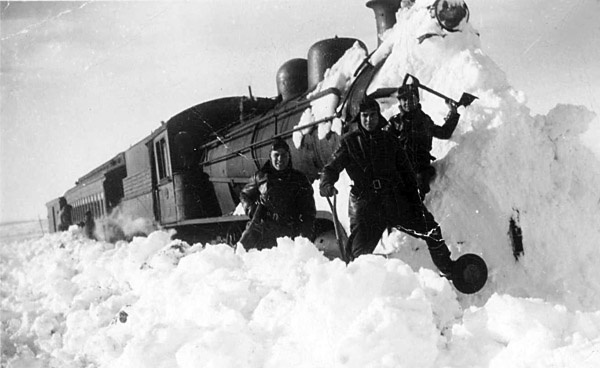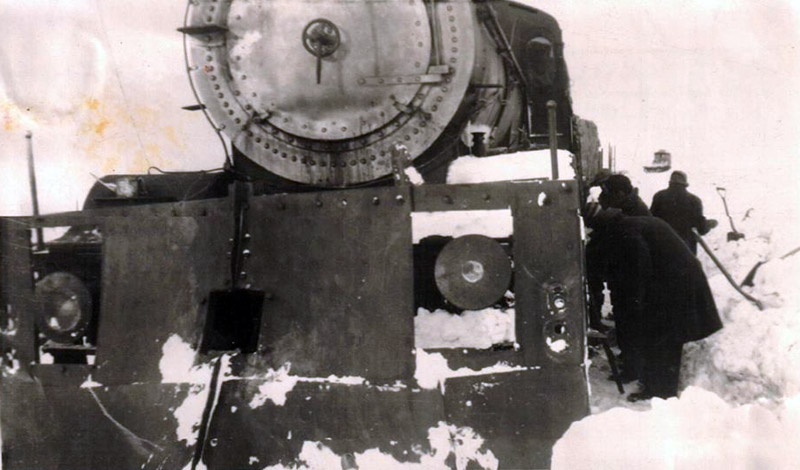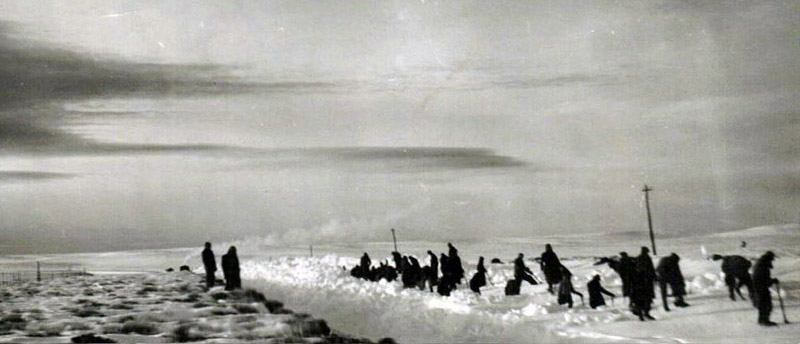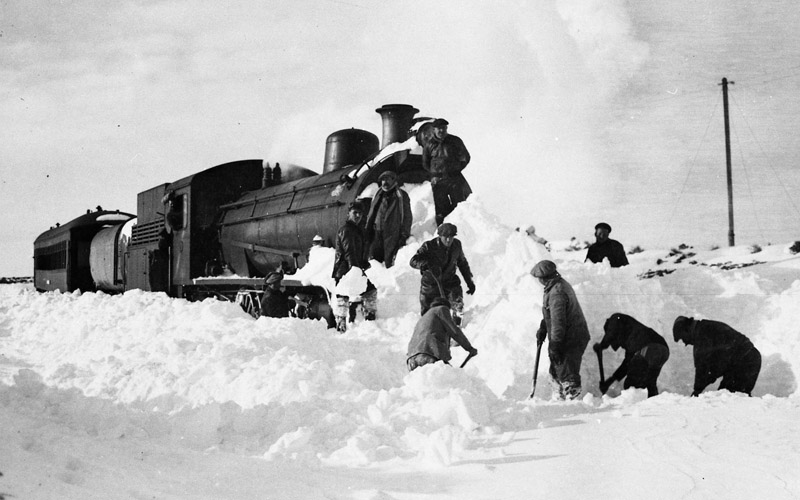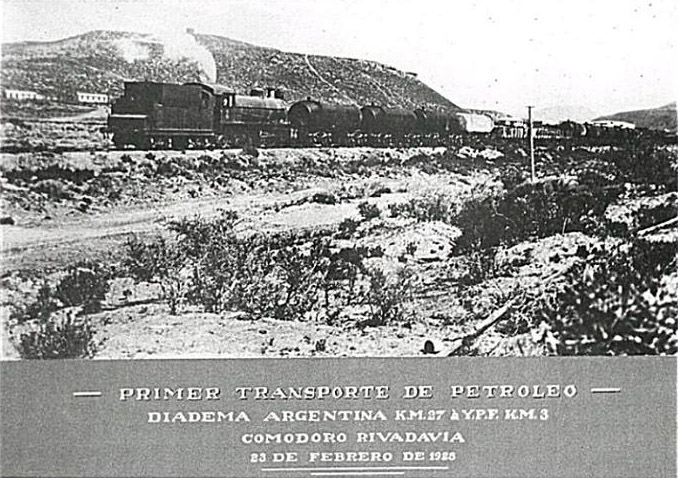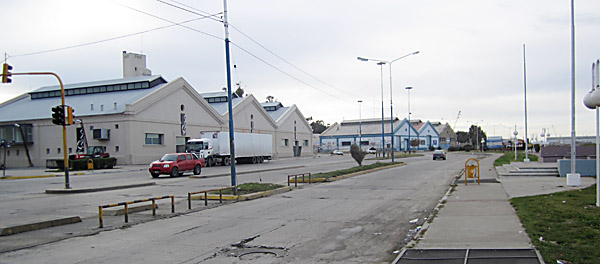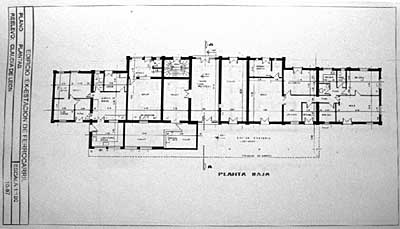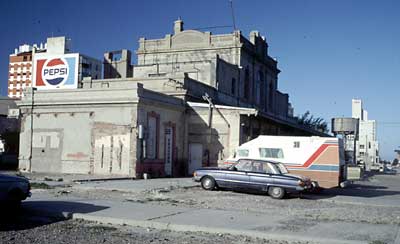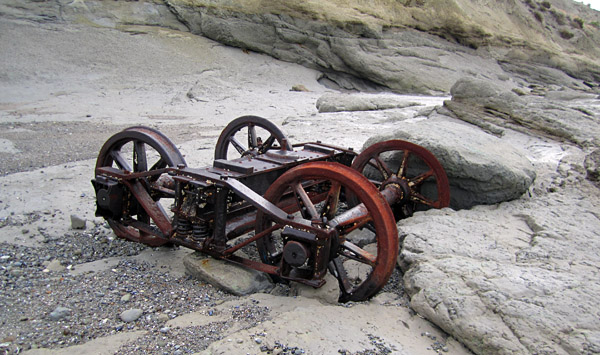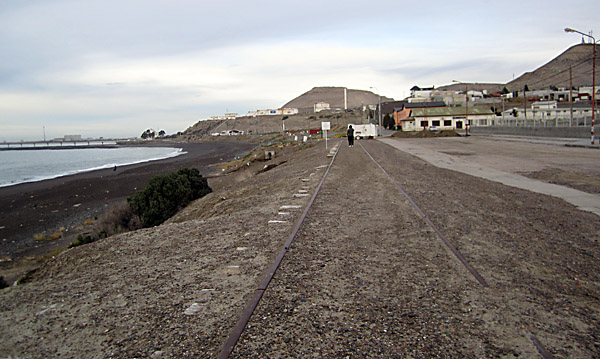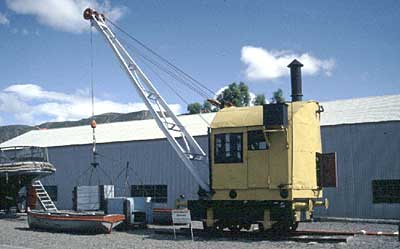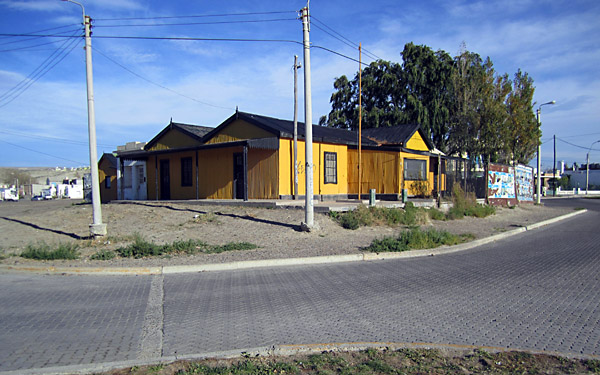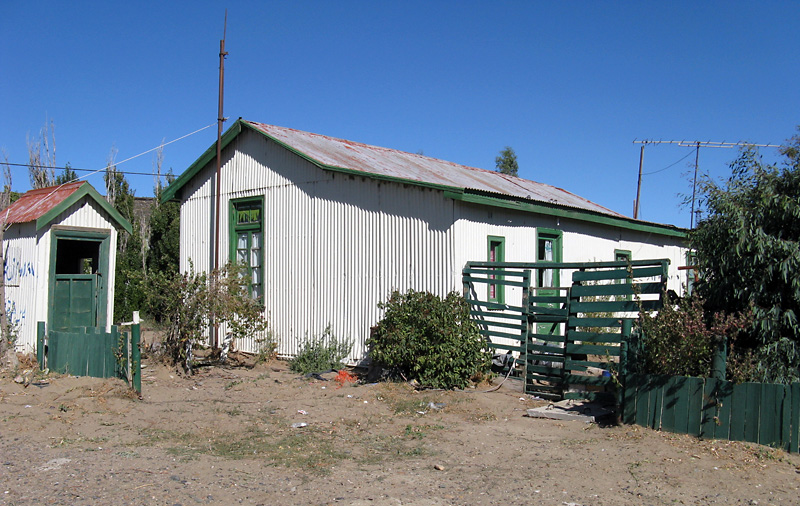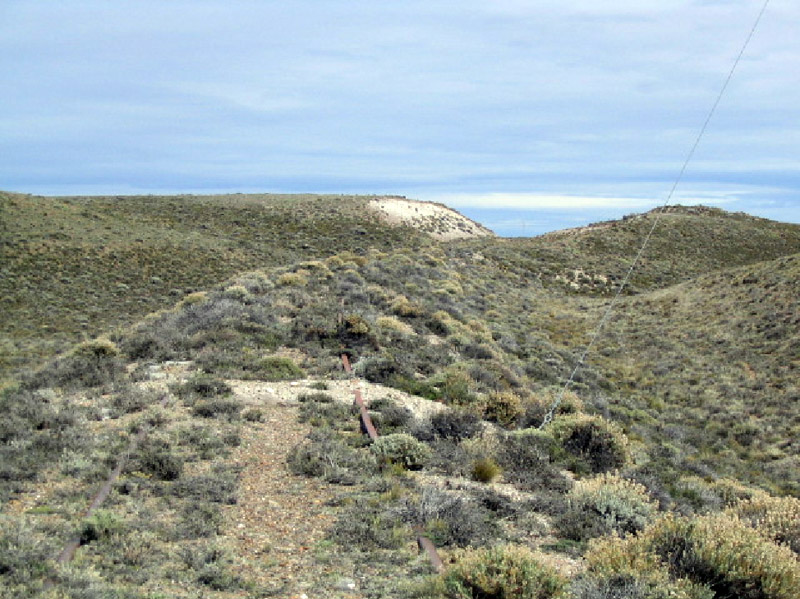 |
|||||||||||||||
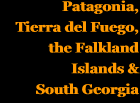 |
|||||||||||||||
 |
|||||||||||||||
 |
|||||||||||||||
Additional photos of the Comodoro Rivadavia line.
Archive photos are set out geographically from the coast up to Las Heras, followed by modern pictures laid out in the same way. Anyone interested in old photos of Comodoro Rivadavia should also visit Miguel Fiordelli's website. A number of his photos are of railway interest and almost all can be viewed in larger sizes by clicking on the thumbnail pictures. Archive pictures A very early photo, possibly taken from the Maciel muelle, and showing materials being unloaded. The railway track is on the right behind the horse-drawn carts, and a loco and van is in thre far distance.
The next photo appears to show the station shortly after its completion. The crowd may even have gathered to celebrate the opening. (2)
A view from the slopes of Cerro Chenque down onto the station. A number of four-wheeled wagons stand in front of the Lahusen y Cia warehouse.
This picture shows the yard at the landward end of the main muelle, with Galpon Aduanero no. 1 on the left, and Barracas nos 1 and 2 on the right. A small tank engine stands in the distance. The creeper on the left hand building implies that this was some years after the construction of these facilities. (4)
The big hammerhead or titan crane and two small steam cranes. The location seems to be out at the end of the muelle and the 75cm track on which crane ran clearly terminates here. (4)
A view from the top of the big crane, looking back along the muelle towards the land. (4)
Wagons are unloaded from a ship in the early 1930s using the big crane.
Two pictures showing the Drewry railcars arriving at Comodoro Rivadavia.
One of the Batignolles tank locos at the port, together with two steam cranes, the leftmost of which is the Pinguely-built one.
Drewry coche motor CM422 at a landslip on the coastal section immediately north of Comodoro station.
Barrio Muelle with a row of what could be miners' cottages in many a mining district in England were it not for the oil storage tanks on the horizon behind them. [1616]
A pacific with three four-wheeled flats opposite the YPF workshops at Km 3. On the right the 60cm gauge YPF tracks from the big muelle further south make a 90 degree curve into the YPF workshop area.
Loading a wagon with bales of wool. The caption says it is at Piedra Buena, which doesn't exist, but Piedra Clavada does. Note how a temporary wooden ramp was used to “roll” the bales up on to the wagon. [1617]
If you're going to have a jolly you might as well be prepared with a table in the van to serve your wine. We don't know where it was other than it is on this line (the van number is the give-away). [1610ñ30]
A drawing of the main loco shed and workshop building at Km. 5. It will be noted that the two road broad gauge shed on the right hand side of the building is mirrored by a three road narrow gauge shed on the left, for the locos of the 75cm gauge line south to Punta Piedras.
A Drewry car at Km. 5 in FCN Patagónico livery.
Several views have amerged showing a breakdown train at the site of a derailment that had involved several of the Nesseldorf / Ringhoffer tank cars. One of them is shown here, with a clerestory brake / postal van at the end of the rake that looks as though it might also have come from the FC Andino. The photo bore a note that it was near Km 27 on 4/7/24.
Additional photos taken during snowy winters out towards Holdich and Pampa de Castillo. (1)
The electric headlamps suggest that both of these pictures date from after the Second World War, perhaps during the 1950s. (6) The photo below is supposed to have been taken at Pampa de Castillo.
A third snow scene, probably in the same area (6).
This is the only view we know of an engine fitted with a snow plough. Interestingly it is all metal extending to above the footplate level, but with openings for the buffers and coupling. [1651]
The top of the engine's chimney and dome are all that can be seen above the snow in what is quite a deep cutting. [1651]
When your coche motor derails out in the middle of nowhere and you have to wait for hours; what's the obvious thing to do? Yes, all get out and pose for a picture! Date and location unknown.
This view is of the train (23 Feb 1928) carrying the first crude oil from Diadema (Km 27) to K 3. Rather unusually the locomotive is running tender first.
Recent pictures
The architectural drawing below is a recent one of the ground floor of the main station in Comodoro Rivadavia. The platform side is towards the bottom of the plan, and the town side twards the top. The original building was totally symmetrical, comprising the five central bays (with extra depth front to rear) and a single shallower bay at each end. It can therefore beseen that extra rooms were added at each end (during the railway's occupation of the building) and out onto the platform (after the closure). (1).
The station went through hard times after theclosure of the railway. Bernhard Stöckhert's picture here, taken in 1994, shows it at its lowest point. Since then the building has been restored and the surviving 0-6-0T and passenger car relocated in front of it. (5)
Another of Bernhard Stöckhert's 1994 pictures, this time showing the water tower visible in the background of the previous photo. (5)
On the beach north of Comodoro Rivadavia harbour, part way towards the YPF muelle, there lie two broad gauge diamond bogies, almost certainly the relics of some long-forgotten derailment. There are also a large numbers of rails, both heavy and light. These may well have been washed away by the sea after the closure of the line, for the trackbed has disappeared of much of this first short stretch.
A little further north, just beyond the YPF muelle, a length of track is still in place on the clifftop.
The Museo Nacional de Petroleo at Km. 3 not only has examples of the narrow-gauge diesels used in the oil workshop sites, but also has one of the steam cranes which worked on the various muelles or jetties. (3)
The Km. 5 station building still survives in 2011, though it is difficult to visualise the tracks running directly in front of it now that the ground level has been lowered for a new road system.
The first station out of Comodoro which can be appreciated in its original setting is that at Kilómetro 27, the outer limit of the suburban service. It is a modest timber-framed corrugated iron building serving the Dutch petrol colony whose houses still show in their gardens the Dutch influence on them.
Two photos taken in 2014 at Cañadón Lagarto by Martín Eduardo de Innocentis show track still in place and the derelict remains of a pair of railway staff houses.
The Holdich station name-plate, currently in the museum within the old Comodoro Rivadavia station building.
The loco shed at Col. Sarmiento in 1992, after the closure but before the tracks were removed (5).
The Col. Sarmiento turntable in 1992. The station building is amongst the trees in the left background, whilst the goods shed is directly beyond the turntable (5).
References: 16-11-16 |
|||||||||||||||


Chapter 4
The FCE broad gauge network
Main pages
Bariloche line rolling stock •
Com. Rivadavia line extra photos •
Pto. Deseado line extra photos •
Pto. Deseado line extra photos 2 •
Appendices
2 Chronology of Patagonian railway proposals •
3 Bariloche line route itinerary •
4 Com. Rivadavia route itinerary •
5 Pto. Deseado route itinerary •
7 Com. Rivadavia line loco list •
8 Pto. Deseado line loco list •
15 FCP working timetable instructions 1960 •
16 Report on construction 1912 A •
17 Report on construction 1912 B •
21 President Alcorta address •
23 Purchase of wagons decree •
25 Early Patagonian proposals •
26 Progress to Bariloche 1926 •
28 Restructuring report 1953 •

